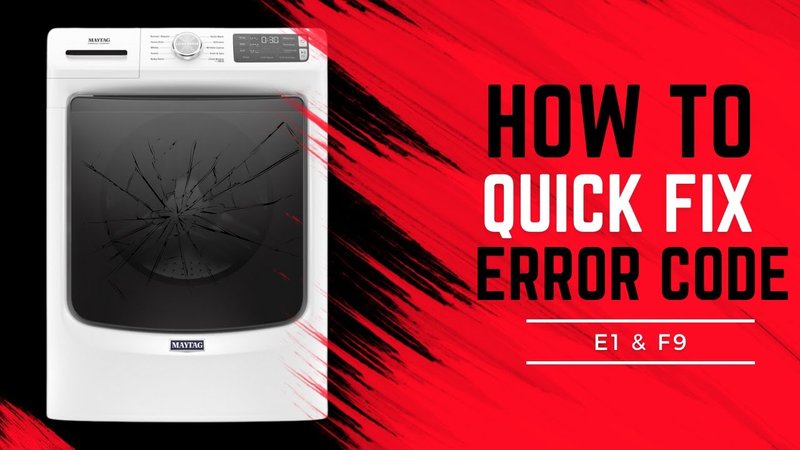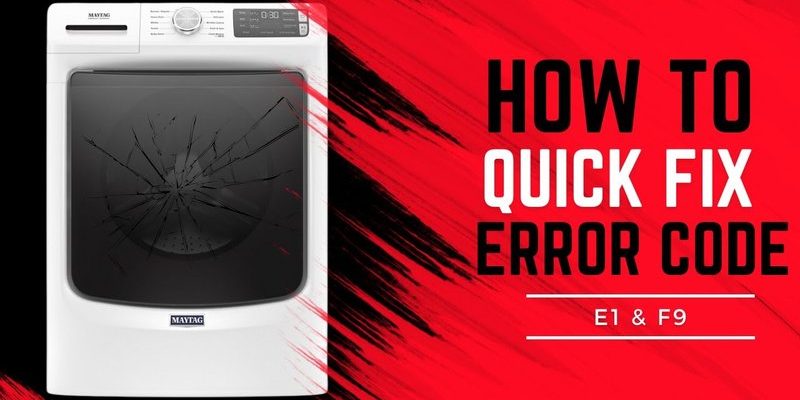
Here’s the deal: when your washing machine displays an E1 error, it’s usually indicating a problem with water not filling properly. Think of it like trying to fill a cup with a kinked straw—it just doesn’t work efficiently. While it might seem like a minor inconvenience at first, ignoring it can lead to more significant problems down the road. Let’s dive deeper into what this error code means and what could happen if you don’t address it.
Understanding the E1 Error Code
You might be wondering, “What causes the E1 error message to show up in the first place?” Basically, the E1 error code is a warning from your washing machine, telling you it’s having trouble getting enough water. This might be due to a variety of reasons, such as a clogged or kinked water hose, a malfunctioning water inlet valve, or even a blocked or dirty filter. Just like how your car won’t run smoothly without enough fuel, your washing machine needs a steady flow of water to operate properly.
Let’s put it into perspective: imagine trying to brush your teeth with the faucet turned off. Not much good, right? Similarly, your washing machine can’t do its job without adequate water. The E1 code is trying to alert you before things get messy. If left unfixed, this issue can cause your washing machine to either not start at all or stop halfway through a cycle, leading to half-clean clothes and a lot of frustration.
What should you do next? The first step is to check for any obvious blockages or kinks in the hoses. Make sure water is actually reaching your machine by turning on the water valve fully. You can also examine the inlet valve and filters for any build-up or debris. Once you identify the problem, you’ll often find it’s something you can handle yourself, saving you time and money.
Consequences of Ignoring the E1 Error Code
Ignoring the E1 error might seem tempting, especially if you’re eager to get your laundry done. But here’s the kicker: ignoring the problem can lead to more than just inconvenience. Over time, a persistent E1 error can result in wear and tear on the machine’s components. Imagine a car engine constantly overheated because of a missing coolant—it won’t be long before more serious damage occurs. Similarly, your washing machine’s motor and other parts can suffer from undue stress if the water issue isn’t resolved.
Moreover, the E1 error can signal an underlying issue with your home’s plumbing. If left unchecked, this could escalate into more significant water pressure problems within your household. It’s like ignoring a leak under the sink until it floods the kitchen—you don’t want to wait until it’s too late to address the issue. In some cases, continued operation with this error could lead to water damage if the hoses are leaking or improperly connected.
So, what can you do? After you’ve checked the hoses and valves, try running a test cycle to see if the problem persists. If the error code comes back, it might be time to consult a professional. Remember, timely intervention can save you from costly repairs down the line.
Tips for Preventing the E1 Error in the Future
Good news: preventing the E1 error is often a matter of regular maintenance and a little forethought. Think of it like maintaining a garden—you trim the hedges, water the plants, and occasionally pull out the weeds to keep everything looking good. Similarly, keeping your washing machine in top shape can prevent error codes like E1 from showing up unexpectedly.
Start by regularly checking and cleaning the water inlet filters and hoses. Every few months, take a moment to inspect them for signs of wear or blockages. A quick clean can prevent build-up and clogs, ensuring water flows smoothly. Additionally, when you install your washing machine, make sure the hoses aren’t twisted or bent, and that there’s adequate space around the machine for ventilation and access.
Finally, consider scheduling annual check-ups with a professional. Just like regular medical check-ups can catch potential health issues early, a routine service can nip potential washing machine problems in the bud. By staying proactive, you can enjoy the benefits of a smoothly running washing machine without the hassle of error codes.
In conclusion, addressing the E1 error promptly not only keeps your laundry day stress-free but also prolongs the life of your washing machine. By taking a little time to understand the cause and taking the necessary steps to fix it, you can avoid bigger issues and save yourself a lot of trouble. Remember, a little maintenance can go a long way!
